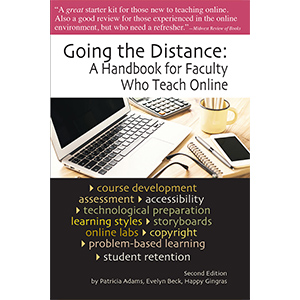The Mentor is In: Developing a Lecture that Matters to Your Students

 By Bruce A. Johnson, Ph.D., MBA
By Bruce A. Johnson, Ph.D., MBA
A classroom lecture can be stimulating and interesting or it can be dry and boring. A lecture is expected for the traditional classroom environment and adapted as a strategy in the online environment through weekly postings that include overviews, summaries, informational postings, and announcements. Students develop a perception about the delivery and content of these presentations based upon prior experiences. They hope to have an instructor who is engaging, dynamic, and able to present information in a way that they engage with it and can remember it after the class is over with. From an instructor’s perspective they can either use it as a means of dispensing information or find a way to make a connection with students so that the delivery of information has impact and meaning. There are techniques that an instructor can build into their facilitation practice that can help to accomplish this goal.
As you begin to develop strategies for the delivery and presentation of your classroom lecture it is helpful to consider the students’ perspective and the amount of information that they are having to process while in this learning environment. In addition, students have active thought patterns that may include what they are doing that day, responsibilities they have, or anything else that is important in their life at that moment. When students enter the classroom they do not automatically make a shift into thinking only about the class, unless your presentation draws them into the topic and engages their full attention. Students make a quick assessment once your lecture begins as to whether they will listen closely to what you have to say or tune you out. An effective starting point would be the inclusion of an overview, relevant story, or discussion about how the topics covered are relevant to the class and the process of learning, as a means of gaining their attention. If you can gain their attention at the beginning you can then use that advantage and continue your presentation in an interactive and engaging manner.
Developing a lecture that matters to your students will require an investment of time and thought. If you want to enhance the process of learning take time to plan what material needs to be covered and how that information will be delivered. An effective starting point is to create an outline and block out specific amounts of time and include key talking points, along with interactive learning activities that can be used to supplement your presentation. You may choose to include a question and answer class discussion, a presentation by a guest lecturer, individual and group activities, an assessment, review games, and individual or group presentations. The point of adding activities is to add a hands-on element to the class where students are utilizing cognitive abilities to work through and apply the information that they are being given. Many of these activities also help students explore their experience, background, and knowledge in relation to the course concepts, while offering a real-world, practical application. This is likely to stimulate their interest, increase their engagement in the class, and help them retain the knowledge they have acquired.
Another very important aspect of creating and delivering a lecture that is dynamic is to develop, enhance, and monitor your method of communication. With a lecture there are two primary options. You can either choose to talk at your students and present information or you can interact with them and engage their thinking and analysis skills. You can also be alert for communication barriers such as talking up to your students or talking down to them, overuse of technical jargon, developing an over-reliance on slides to present information, or an ineffective tone, which can disengage your students from the process and cause them to discontinue listening. To provide an effective vocal delivery it needs to be warm and inviting and clearly understood so that students are encouraged to focus their thoughts and be involved. Developing and delivering a class lecture is not just a matter of establishing authority and subject matter expertise. This is an opportunity to demonstrate your ability to facilitate a process of learning and knowledge acquisition by encouraging your students to become active participants. When you deliver a lecture that matters to your students you will find that their comprehension of the information delivered and their understanding of the course topics is greatly enhanced and remembered after the class has concluded.
About the Mentor: Dr. Bruce Johnson has had a life-long love of learning and throughout his entire career he has been involved in many forms of adult education; including teaching, training, human resource development, coaching, and mentoring. Dr. J has completed a master’s in Business Administration and a PhD in the field of adult education, with an emphasis in adult learning within an online classroom environment. Presently Dr. J works as an online and on-ground adjunct instructor, faculty developmental workshop facilitator, and faculty mentor.







